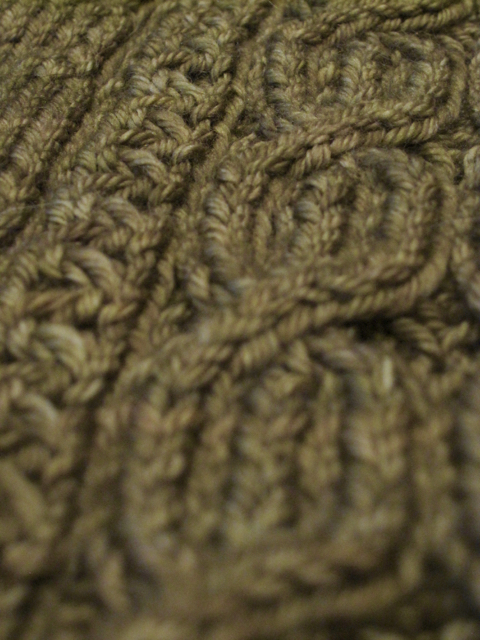When yarn choice matters
Some days we can grab a skein of yarn, print off a pattern, and be off to the races on a new project, thoroughly caught up in the excitement of casting on. But sometimes, matching yarn and project takes a bit more thought. As I recently found out with my current sweater project, Dark and Stormy by Thea Colman.
Dark and Stormy is a top-down, raglan cardigan with a shawl collar and a large cable down the back. There are two smaller cables alongside each front edge, but the rest of the sweater is in stockinette. I have a sweater lot of Berrocco Ultra Alpaca in a dark, foresty green that has been hanging out in my stash for a while now, and I thought it ould be perfect for this project. In a fit of enthusiam, I cast on and started knitting away merrily.
After getting about half way through the yoke, I took a look at the cable on the back and thought to myself "Self, that cable is kind of getting lost..."
While I was loving the colour, the halo from the alpaca content was not really pushing my buttons as far as the texture went. I went to Knit Night and took a wee poll of the assembled multitudes: the overwhelmin consensus was that this was perhaps not the best yarn for this pattern. Allison pointed out that I have a sweater lot of SweetGeorgia Superwash Worsted (also in green) that might work better, because it is a much more tightly plied 100% wool yarn. So I went home, and cast on with the new yarn.
Hopefully you can see easily how much clearer the stitch definition is, and how much better the cable looks. Heck, you can actually see the cable, which is definitely a step in the right direction!
This is a very good example of why some patterns need a particular type of yarn. A design that depends on a texture pattern for full impact, like Dark and Stormy, is best suited to a multi-plied yarn with a fairly high twist so that the stitches pop. The Ultra Alpaca, with it's 50% wool/50% alpaca fibre content, is a lovely yarn, but the lack of crimp in the alpaca makes for a much softer and blurred stitch definition. Not great for this design. It's also not as round and tightly plied as the Superwash Worsted, another reason why the stitch definition isn't what I wanted for the cables.
Other yarn-pattern combinations that won't work so well? Socks in merino singles or pure silk yarn; mittens in softly spun anything; a fitted and shaped sweater in 100% cotton. Singles yarns or softly spun and plied yarns are terrible for anything that needs to be hard wearing, while silk and cotton have almost zero elasticity, and won't hold their shape. Sometimes this mismatches can be compensated for by stitch pattern (like ribbing to add elasticity), but I think I'd rather start with materials that are suited to the item I'm making!
That's not to say you have to knit every design in the exact same yarn the designer used, but take a moment and think about why they chose the yarn that's used for the sample. Sometimes it is as simple as that was the yarn that was available, either in their stash or in yarn support. But hopefully the designer spent some time with that yarn trying to figure out how it would work best. If you take a few minutes to think about the yarn you're choosing for your project, your chances of ending up with a disappointing FO go down.
I'm happy to say that the Superwash Worsted is the perfect yarn for this sweater, and it is moving right along! Body is done, and one sleeve is underway. Whether or not it's finished by Christmas remains to be seen....




